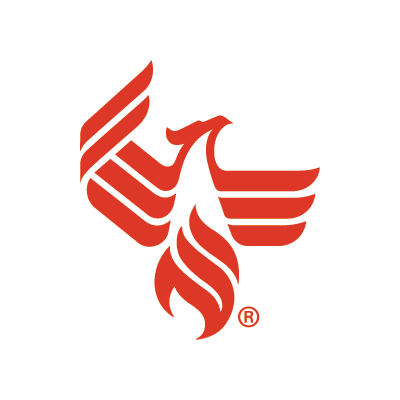A list of soft skills you need for the workplace
This article was updated on December 6, 2023.

Reviewed by Jessica Roper, MBA, director of Career Services at University of Phoenix

What are soft skills and why do they matter?
It’s no secret that bolstering your skill set is essential for a successful career in virtually any field. But there’s another set of skills to master outside of your chosen profession. No matter what your field or your level of expertise, these skills are always in demand, and they’re known as soft skills.
Soft skills are common sense, core abilities like critical thinking, effective writing, understanding general hierarchies, an aptitude for teamwork, the ability to read tone and body language, public speaking and other communication skills. Additionally, those with networking skills, organizational skills and other interpersonal skills often find themselves positioned for success, thanks to their ability to read a situation and adapt.
The importance of soft skills in the workplace cannot be overstated. Enhancing your career can often be made easier with the right communication skills and teamwork skills. Soft skills can also help you stand out as an attractive candidate when it comes to job interviews.
"We use these skills every day both in the workplace and in our personal lives," notes Doris Savron, vice provost at University of Phoenix (UOPX). "Soft skills influence how we interact and build relationships with others. They help us build trust and appreciate the value of what others may have to offer. The relationships we build are critical to career success. Unfortunately, there are often assumptions that people should already know how to interact and work with others, and there is less focus on developing these skills like listening, communicating, managing conflict and adapting to situations quickly."
These skills are so mission-critical, in fact, that the job-search powerhouse Indeed.com recommends highlighting them on your job applications. The website notes : "Employers recognize the importance of soft skills in the workplace, so it's important for people to put soft skills at the forefront of job applications. Soft skills demonstrate that you understand the different characteristics that will help you succeed within an organization and your specific position."
What’s the difference between soft and hard skills? And how do you develop this essential knowledge? Read on to find out.
Hard skills vs. soft skills
You may be wondering about the difference between soft and hard skills. Soft skills are typically seen as "people skills," like communicating and working well with others, patience, time management, leadership, public speaking and others .
Hard skills are generally considered "talents" developed after months or years of training, such as learning a foreign language, project management, computer and analytical skills, and more.
Savron expands on this, saying: "Hard skills include knowledge and abilities needed specifically to do a certain job, often considered technical skills. For example, a nurse needs to understand medical terminology or how to take someone’s blood pressure [and] do an injection.
"These specific [hard] skills are unique to the job," she explains. "Soft skills are personal attributes that determine how well a person would fit into a team and [they] are skills shared across job functions like communication skills or critical thinking."
While soft skills are important, they can be hard to quantify and prove. Or, as The Balance Careers points out, "If an employer is looking for someone who knows a programming language, you can share your grade in a class or point to a program you created using the language. But how can you show that you have a work ethic or any other soft skill?"
Soft skills, therefore, are ones that you must show, rather than tell. Show you are a great public speaker by offering to take the lead on a presentation. Demonstrate your strong creative writing and communication skills by helping with a press release for a product launch.
To demonstrate your mastery of a hard skill, on the other hand, you would simply tell the interviewer how you developed that skill, whether it was by graduating at the top of your class or completing a certificate program.
Why we all need soft skills
"Employers have a desire for all employees to have key soft skills," Savron says. She adds that some of the most important are good communication, collaboration, critical thinking, problem solving and integrity.
"Newer ones being adding to those expectations include empathy, creativity, and diversity and cultural competence," she says. "These skills contribute to career success as much as hard skills do and are even more critical for leadership."
8 top soft skills for school and work
There are many, many soft skills to consider developing or highlighting. Some of the more prominent ones include:
- Organization. Do you care about physical neatness (e.g., a clean desk, folders in their proper order in filing cabinets) as well as mental organization (keeping track of your to-do list)? Then you are already well ahead of most people in terms of organization.
- Communication. Reaching people is easy. Convincing them, captivating them, entertaining them or educating them, however, can be incredibly challenging without interpersonal skills like communication. If people frequently ask you to clarify a point, your documents come back with lots of red pen marks or you’ve had problems with HR because someone misunderstood or misinterpreted your comment, you may need to work on your communication skills.
- Teamwork. Teamwork is crucial, even if you’re an entrepreneur or freelancer. You need to know how to work alongside your clients, their employees, vendors, team members who work for your clients or partner organizations also serving them. You may even need to know how to work with and manage eventual employees of your own.
- Networking. Succeeding in any field, especially competitive ones, requires strong networking skills. These might include remembering people you met briefly (and by full name), collecting business cards, joining LinkedIn® Corporation and using it to your benefit and generally building your "network" or professional database of friends, co-workers and acquaintances.
- Public speaking. Many people fear public speaking, some are indifferent and a few are exceptional, natural orators. The trick is understanding which one you are before your first presentation or business event. If you’re one of the many people who find public speaking tough (or downright terrifying), practice makes perfect. The more times you run through it, the more likely you are to do the real thing with confidence.
- Creative writing. If you were assigned to write an article or essay on a specific subject, could you do it? If you recoil at the idea of typing something from scratch (or even an outline), you may need to develop your writing skills.
- Time management. Are you using your time wisely? If you feel like you get things done much faster than coworkers, you may be practicing excellent time management. If, on the other hand, you feel harried or behind, you may need to work on prioritizing your to-do list, setting clear and attainable goals and further fine-tuning your time-management skills.
- Leadership. While some people are natural leaders, others benefit from the mentorship of a good leader. Skills like time management, delegation, goal setting, conflict resolution and communication all combine within excellent leaders who can guide their team to success.
Another soft skill worth developing is learning how to take initiative. This is a little tricky since it involves being attuned to tasks or problems before they’re readily apparent. And while it’s great to head off problems or complete a project before anyone asks you to, be careful that you do not overstep your boundaries. (Doing someone else’s job, for example, might not go over well with your co-worker or your supervisor.)
Do, however, look for ways to get a head start on a project you’re already going to be working on. Or see if you can complete preliminary research or brainstorm ahead of a meeting or workshop.
How to learn a list of soft skills at University of Phoenix
University of Phoenix recognizes the importance of soft skills, such as communication and critical thinking, and has built them into its curriculum.
"We believe that soft skills are so critical," says Savron, "we developed University Learning Goals that all programs and certificates adopt into their curriculum alongside hard-skill development."
These learning goals include soft-skill staples like collaboration, communication, critical thinking and problem-solving. Other skills, like cultural competence and digital fluency (communicating, making decisions and achieving results leveraging technology for success online), are in the works.
“Each program or certificate not only maps and assesses those hard skills relevant to each credential," says Savron, "but it incorporates and assesses all these soft skills tied to the University Learning Goals as well."
Because at the end of the day, success boils down to more than just hard skills. You need soft skills, too, for today’s marketplace.
LinkedIn is a registered trademark of LinkedIn Corporation and its affiliates in the United States and/or other countries.

ABOUT THE AUTHOR
Brian Fairbanks is a freelance writer with a background in SEO content creation and blog article development
This article has been vetted by University of Phoenix's editorial advisory committee.
Read more about our editorial process.
Read more articles like this:





